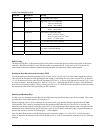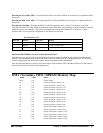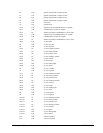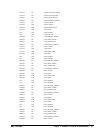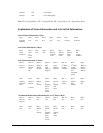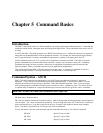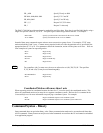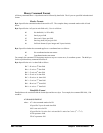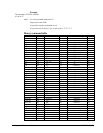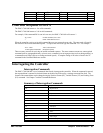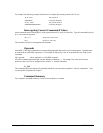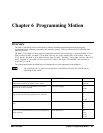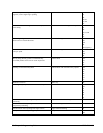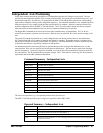
80 • Chapter 5 Command Basics DMC-1700/1800
PR ,,,4000 Specify W only as 4000
PR 2000, 4000,6000, 8000 Specify X Y Z and W
PR ,8000,,9000 Specify Y and W only
PR ?,?,?,? Request X,Y,Z,W values
PR ,? Request Y value only
The DMC-1700/1800 provides an alternative method for specifying data. Here data is specified individually using a
single axis specifier such as X,Y,Z or W. An equals sign is used to assign data to that axis. For example:
PRX=1000 Specify a position relative movement for the X axis of 1000
ACY=200000 Specify acceleration for the Y axis as 200000
Instead of data, some commands request action to occur on an axis or group of axes. For example, ST XY stops
motion on both the X and Y axes. Commas are not required in this case since the particular axis is specified by the
appropriate letter X Y Z or W. If no parameters follow the instruction, action will take place on all axes. Here are
some examples of syntax for requesting action:
BG X Begin X only
BG Y Begin Y only
BG XYZW Begin all axes
BG YW Begin Y and W only
BG Begin all axes
1X80
For controllers with 5 or more axes, the axes are referred to as A,B,C,D,E,F,G,H. The specifiers
X,Y,Z,W and A,B,C,D may be used interchangeably:
BG ABCDEFGH Begin all axes
BG D Begin D only
Coordinated Motion with more than 1 axis
When requesting action for coordinated motion, the letter S or T is used to specify the coordinated motion. This
allows for coordinated motion to be setup for two separate coordinate systems. Refer to the CA command in the
Command Reference for more information on specifying a coordinate system. For example:
BG S Begin coordinated sequence on S coordinate system.
BG TW Begin coordinated sequence on T coordinate system and W axis
Command Syntax - Binary
Some commands have an equivalent binary value. Binary communication mode can be executed much faster than
ASCII commands. Binary format can only be used when commands are sent from the PC and cannot be embedded
in an application program.



